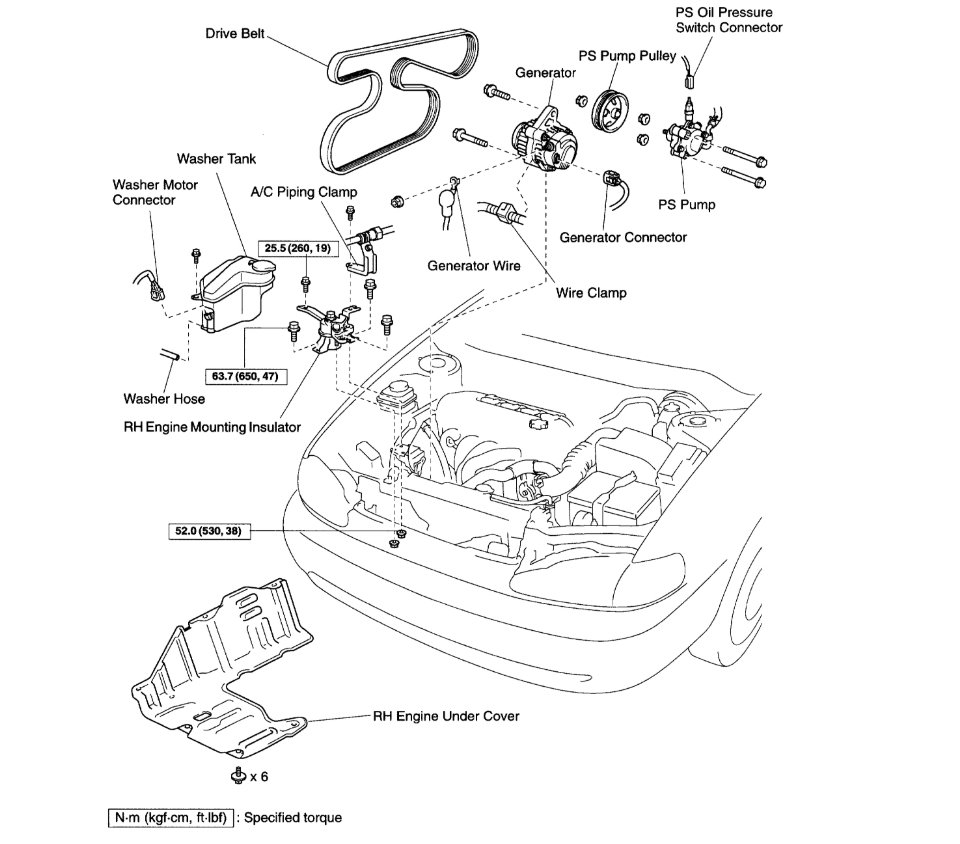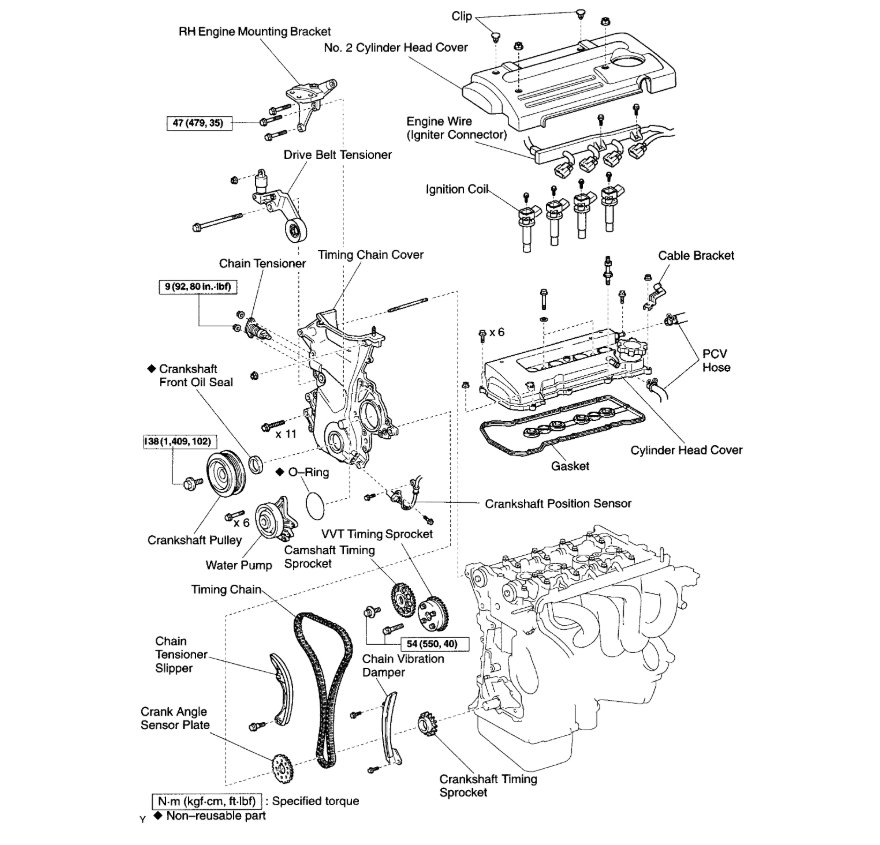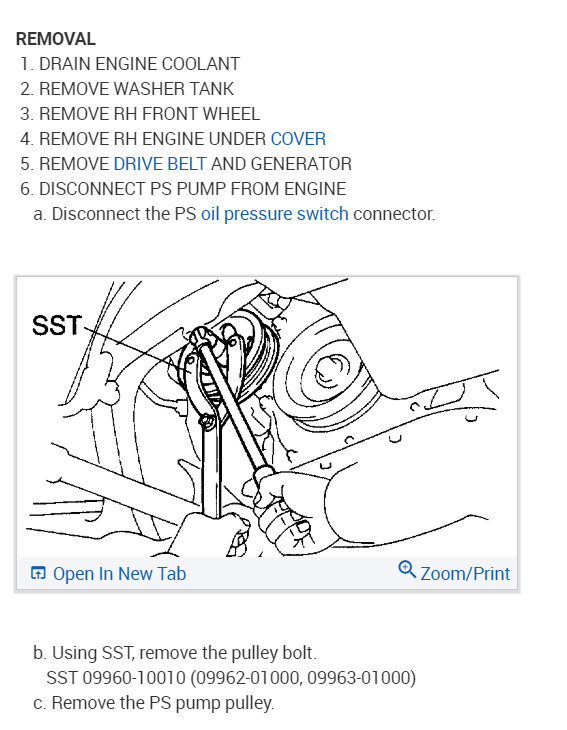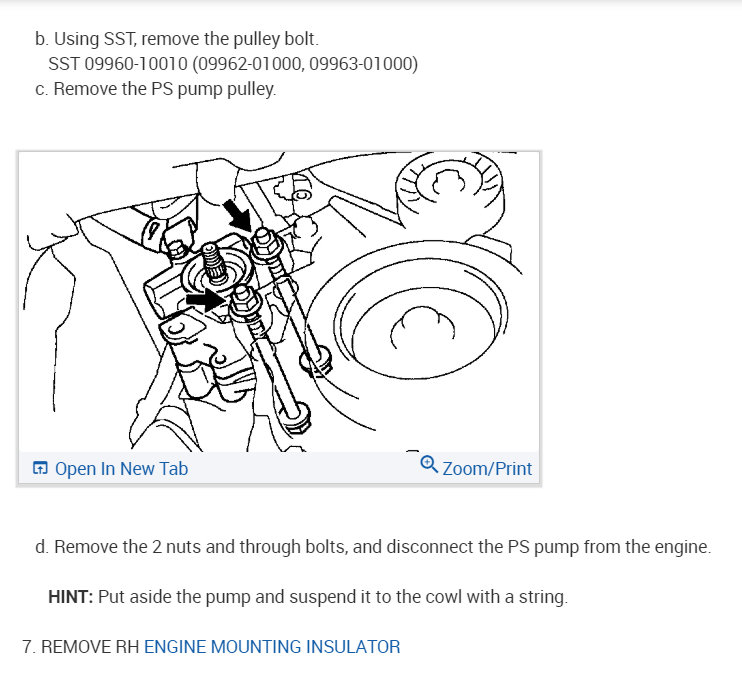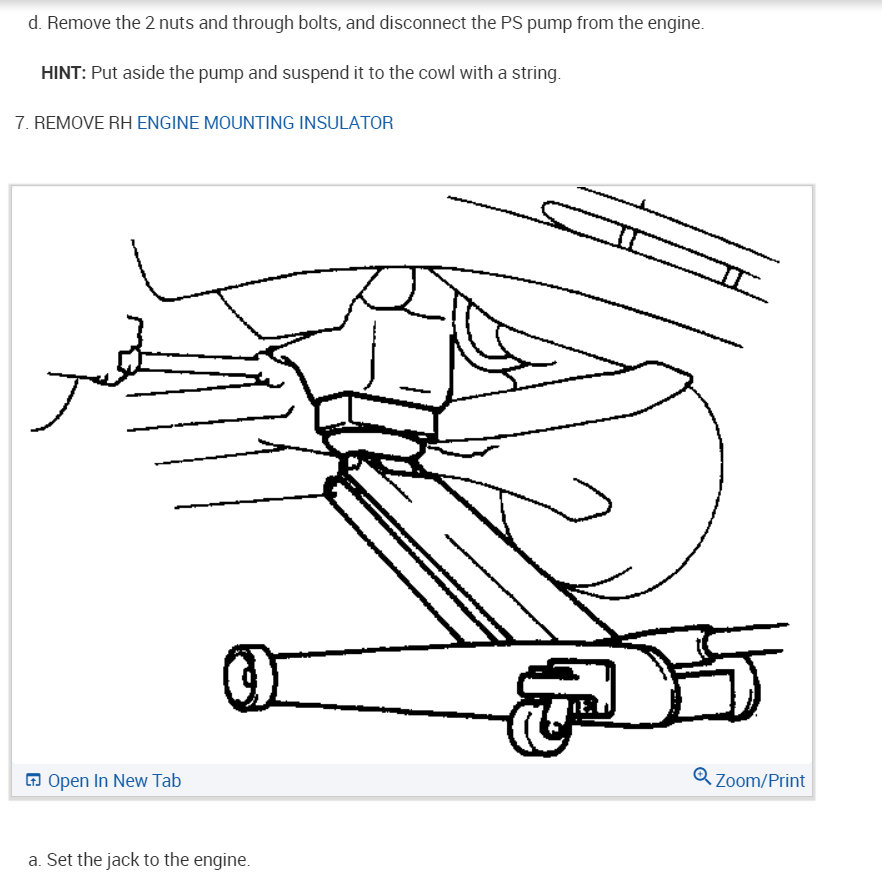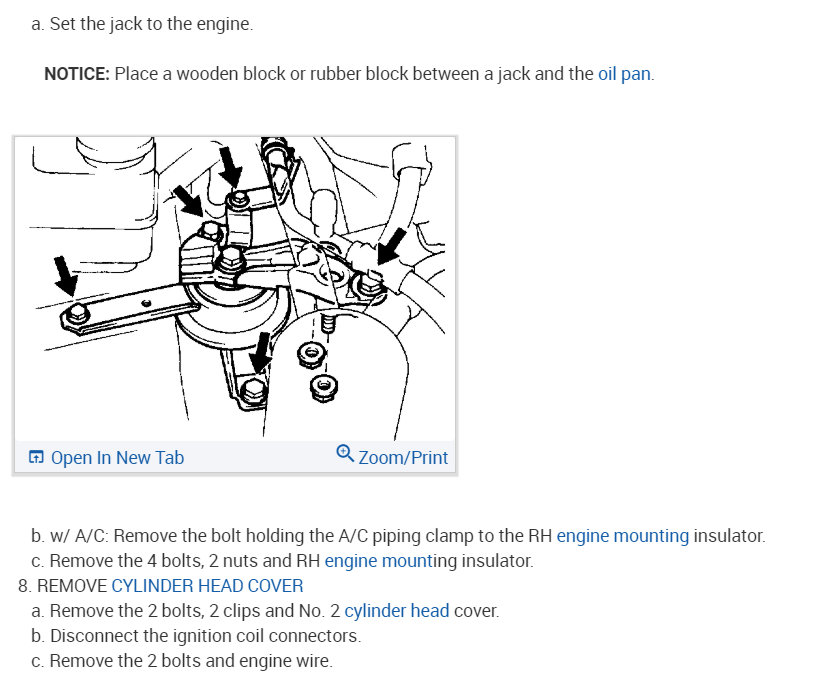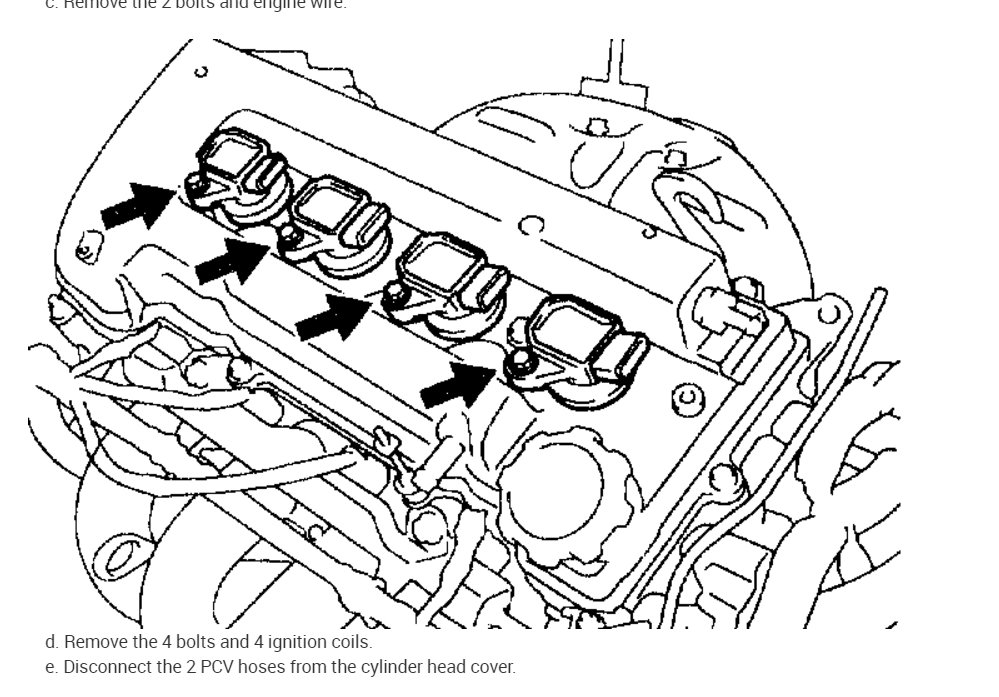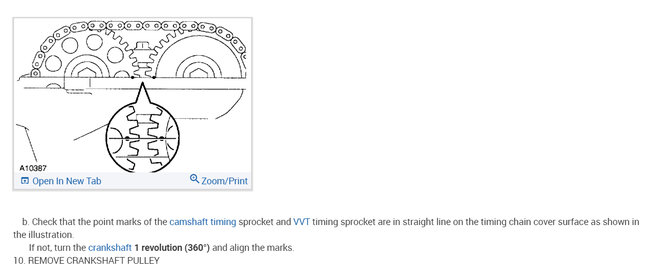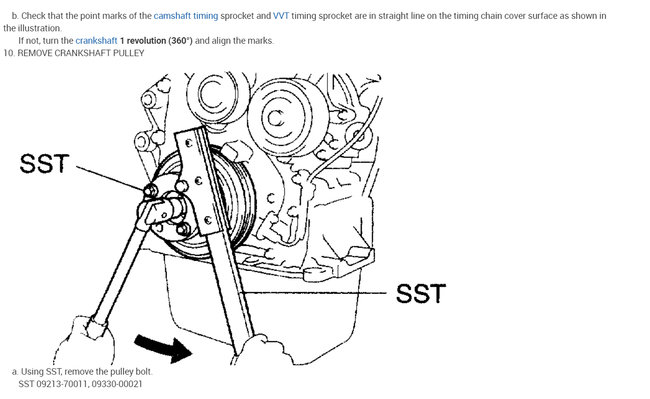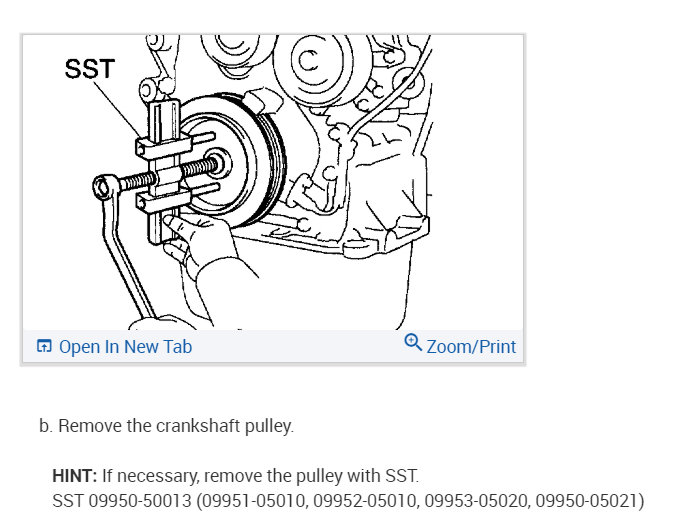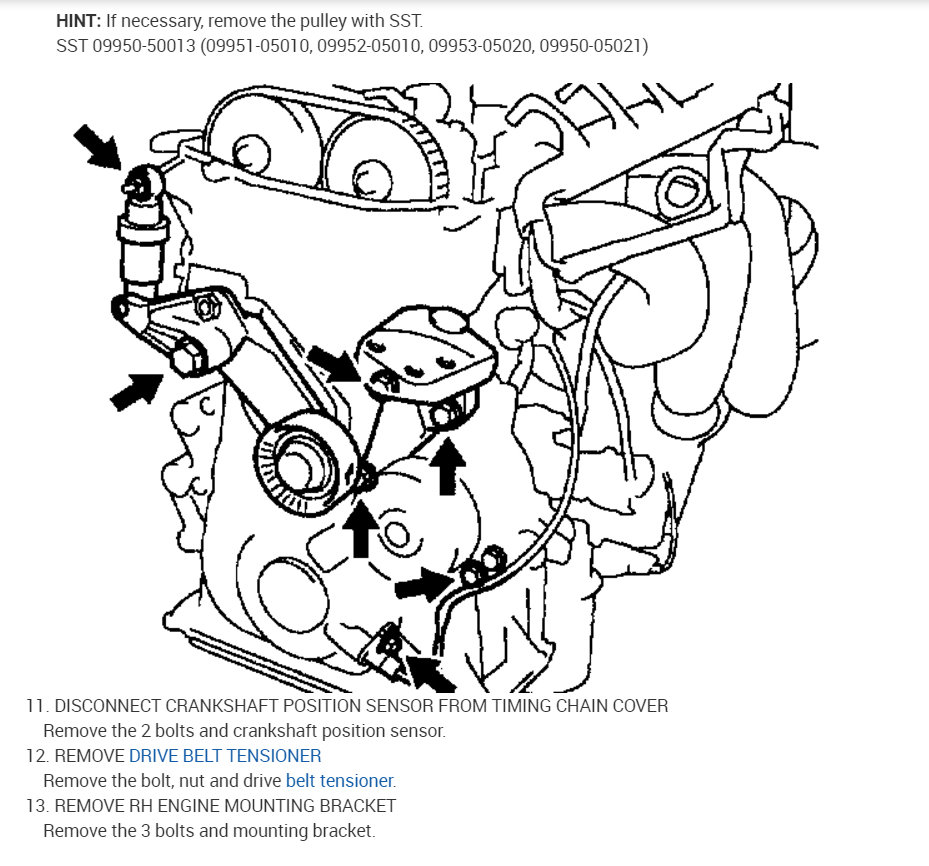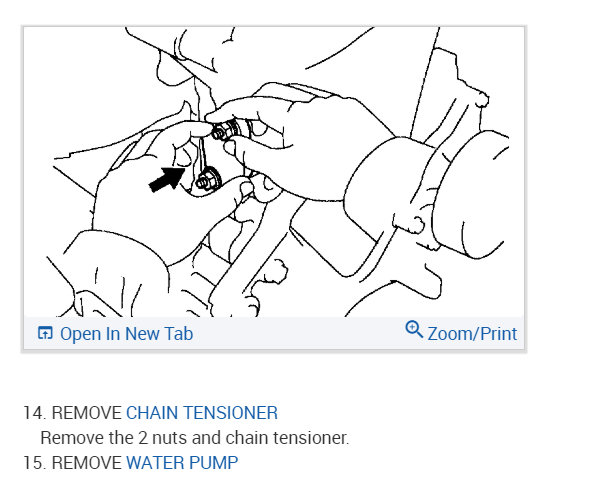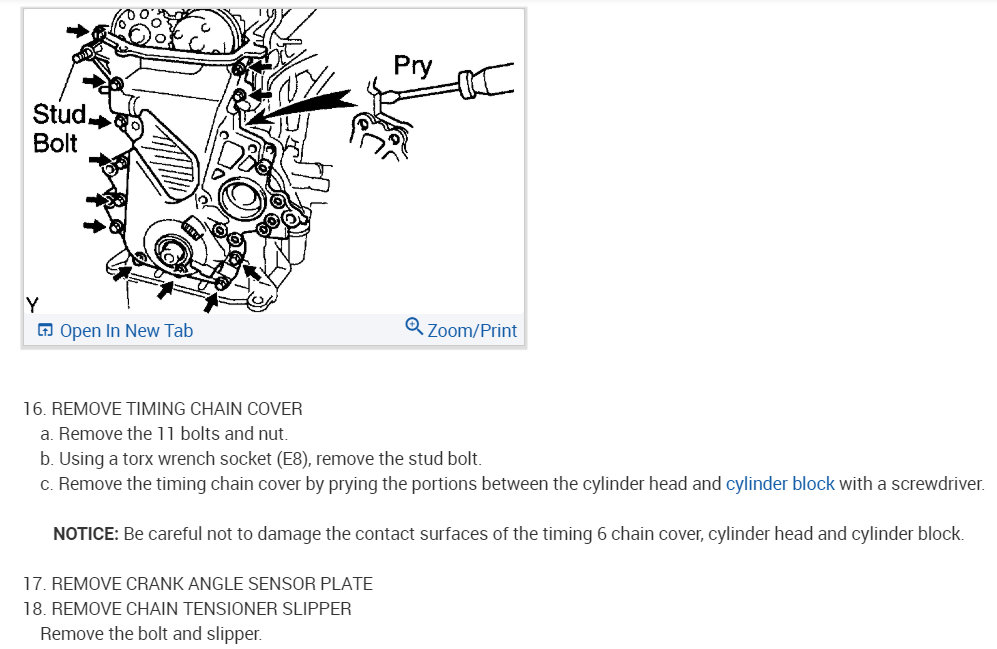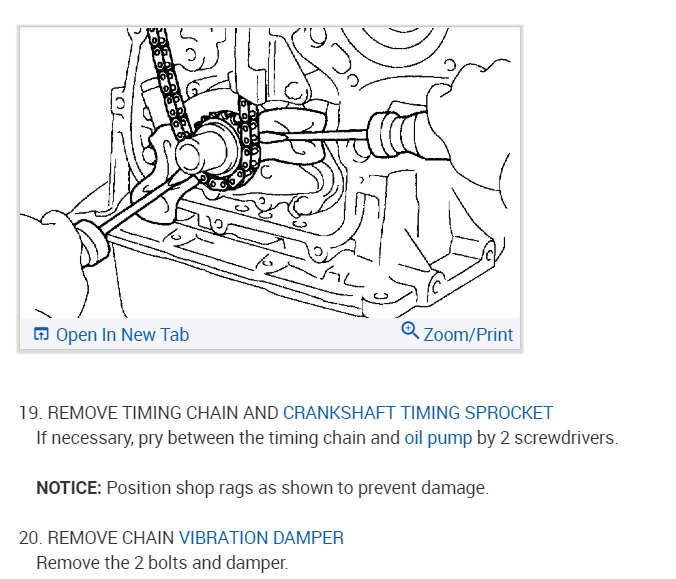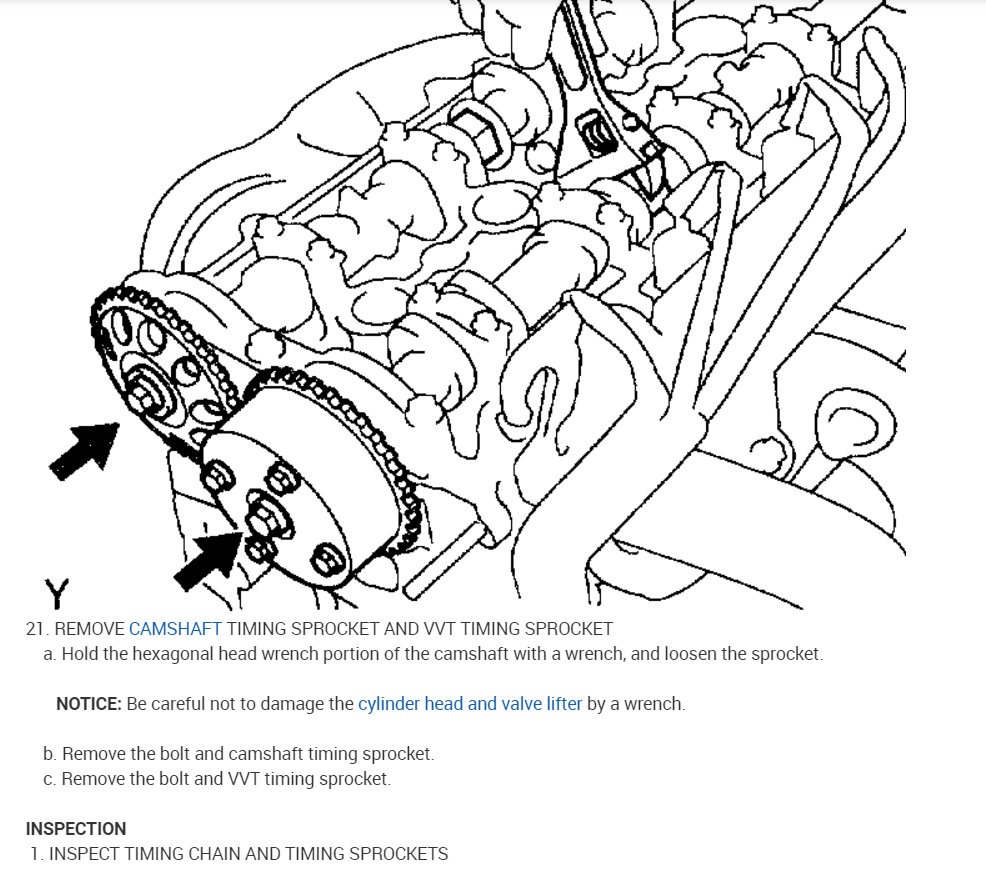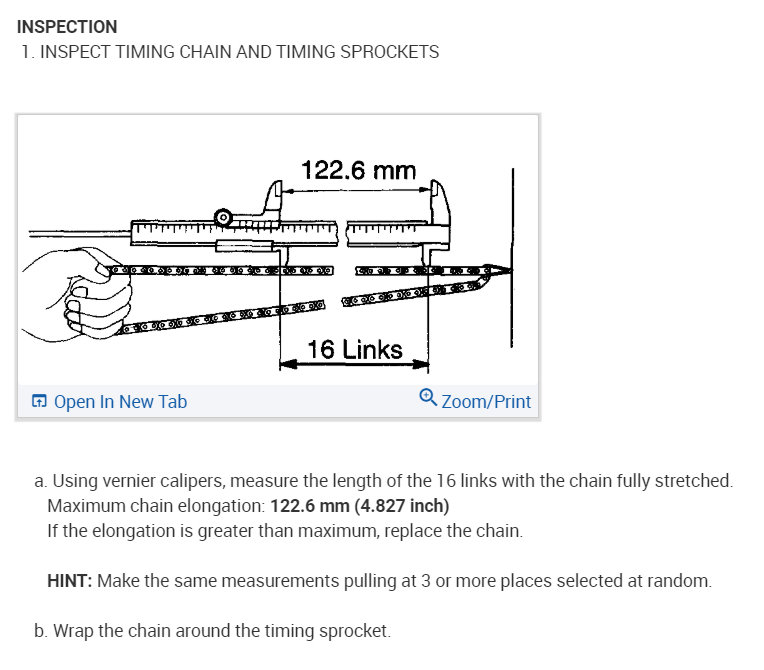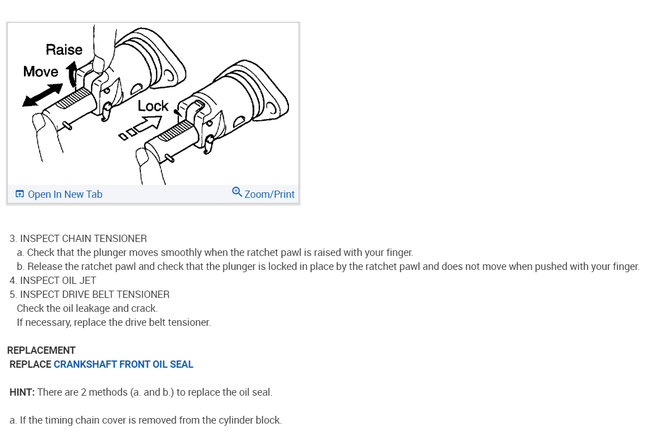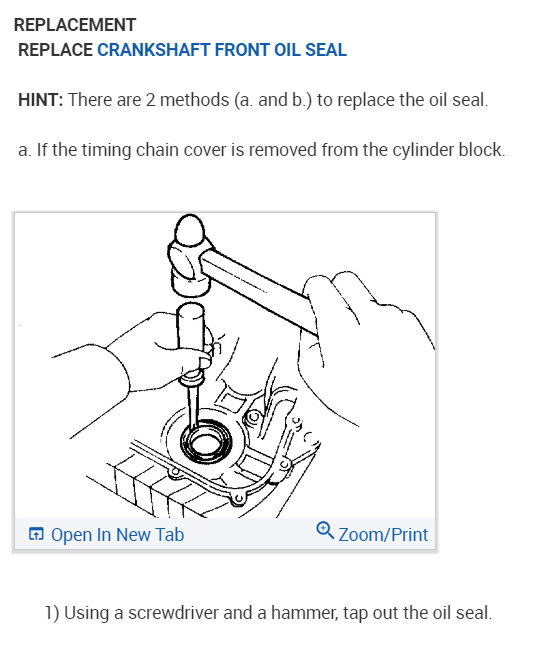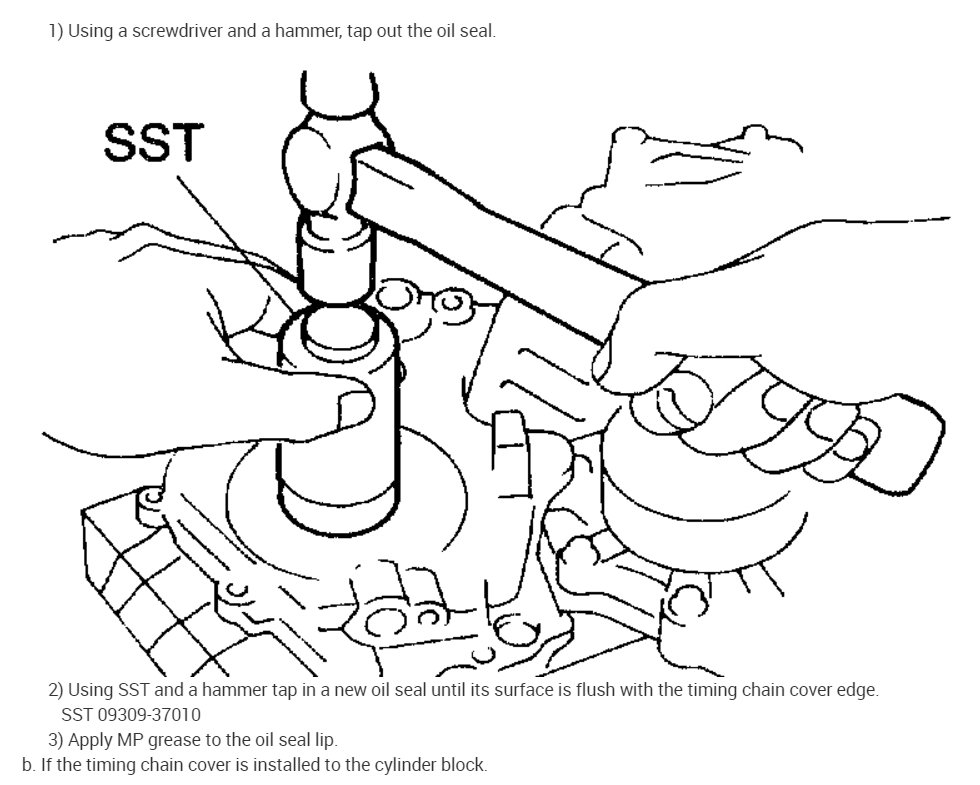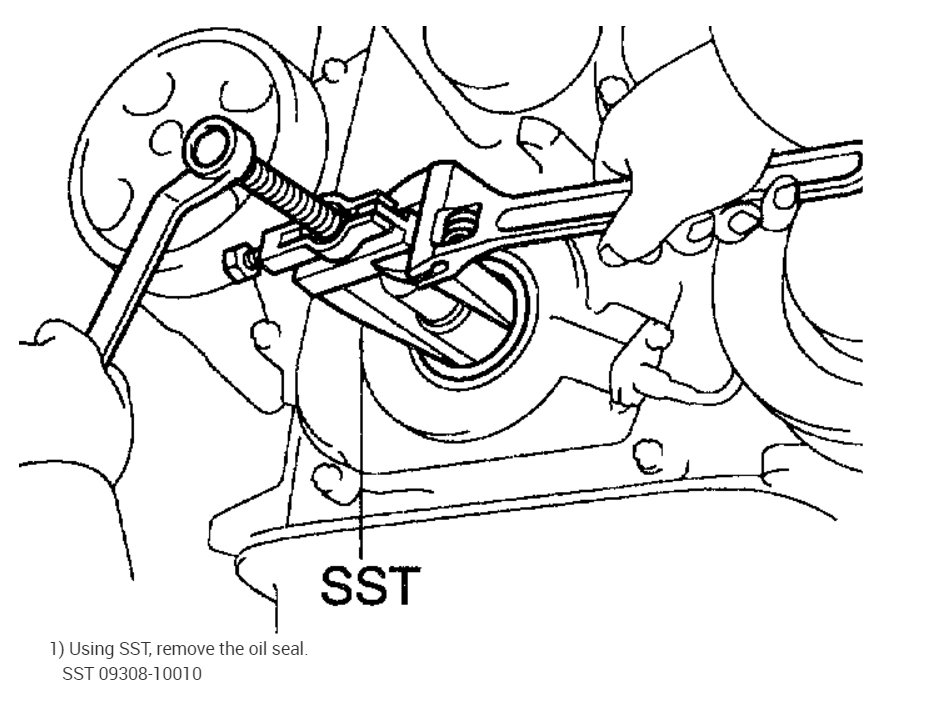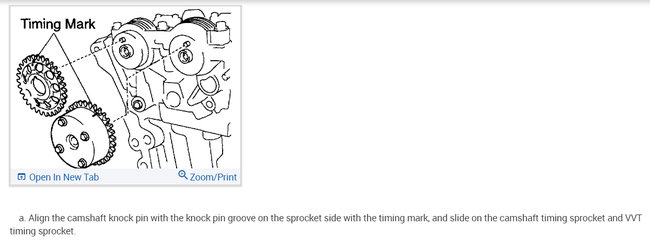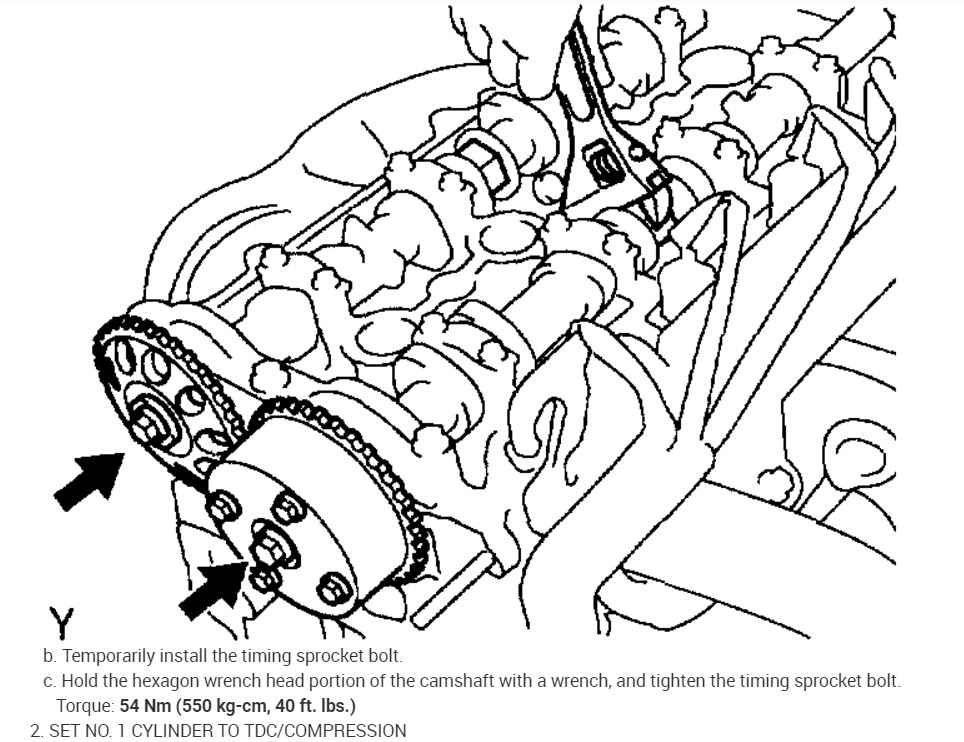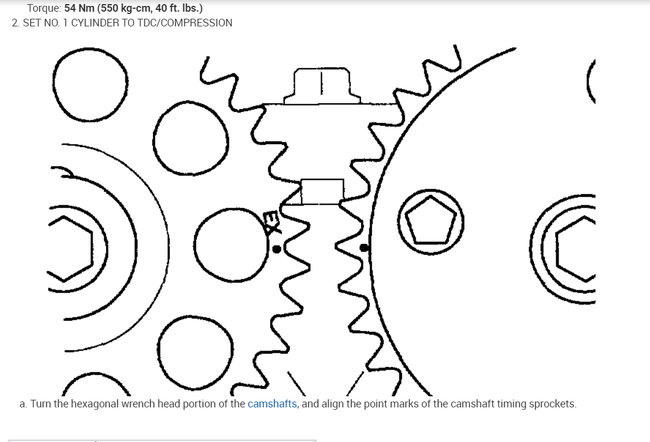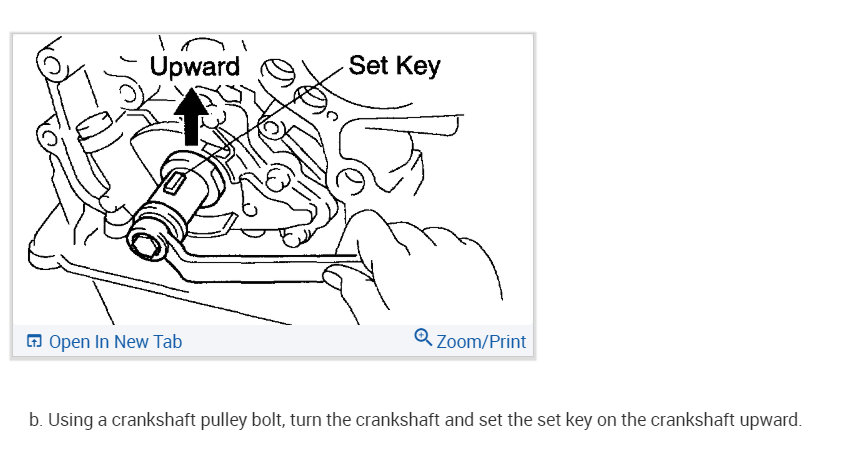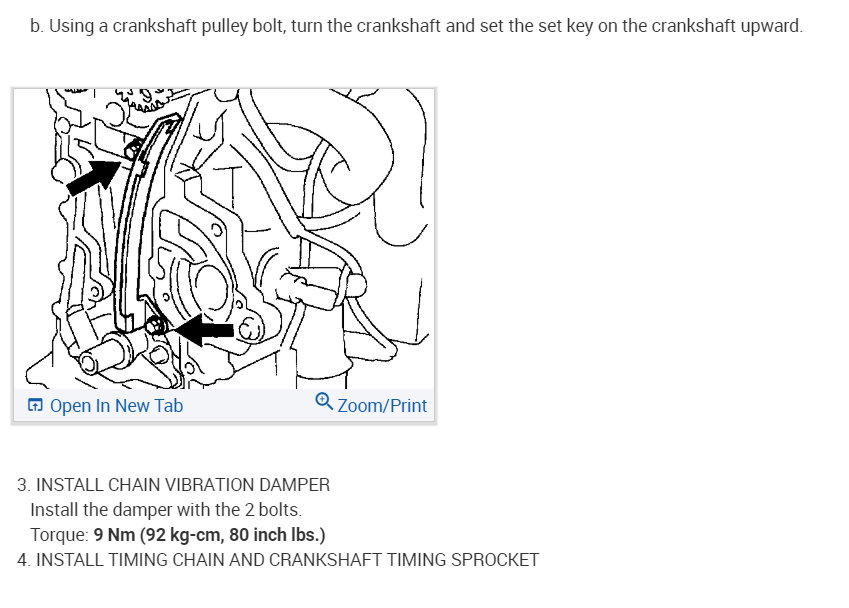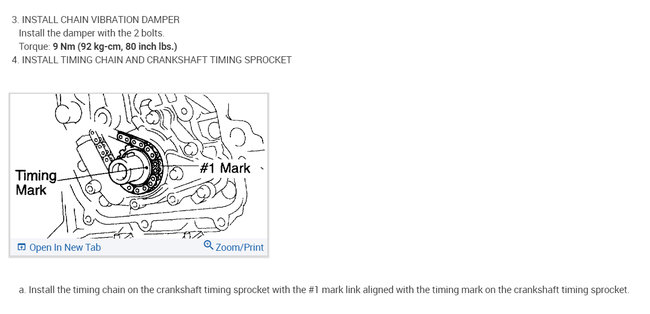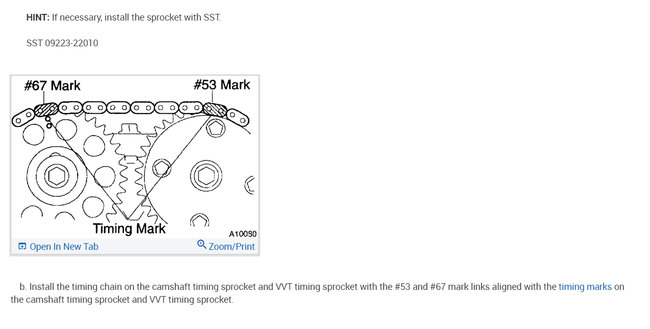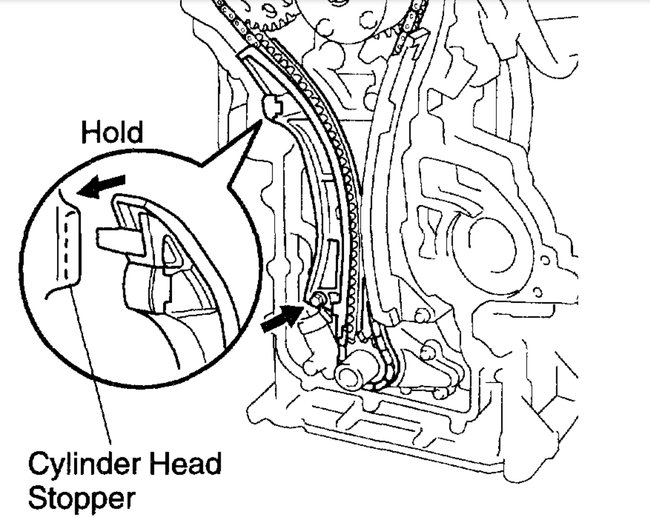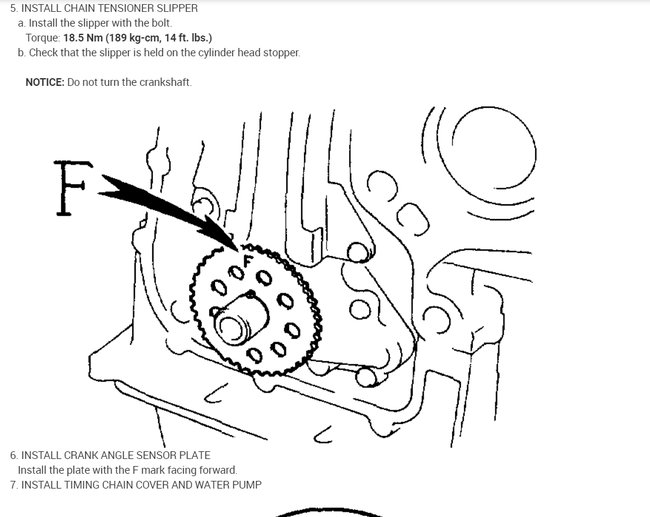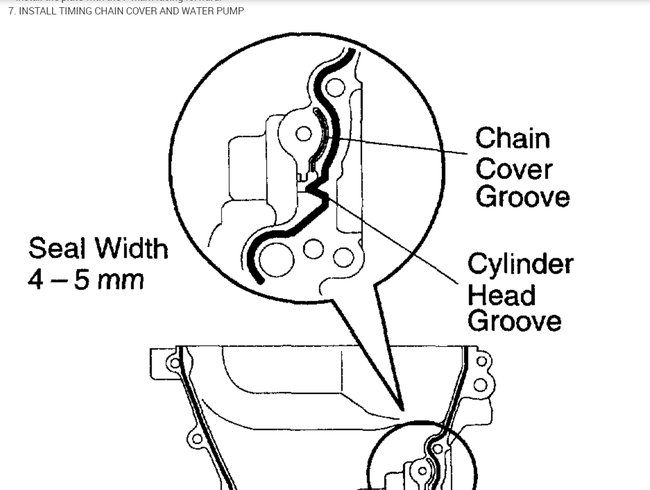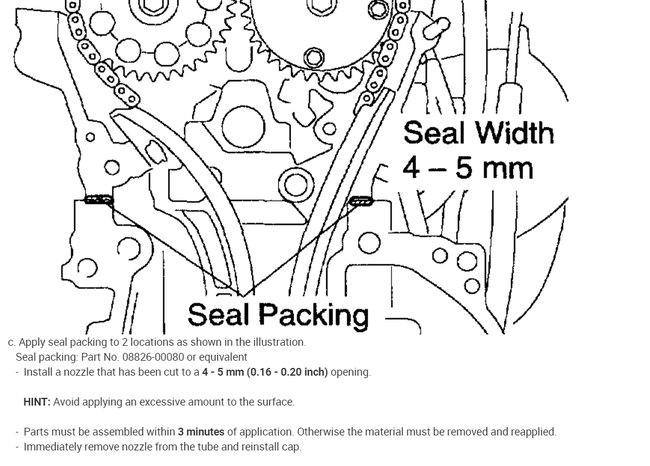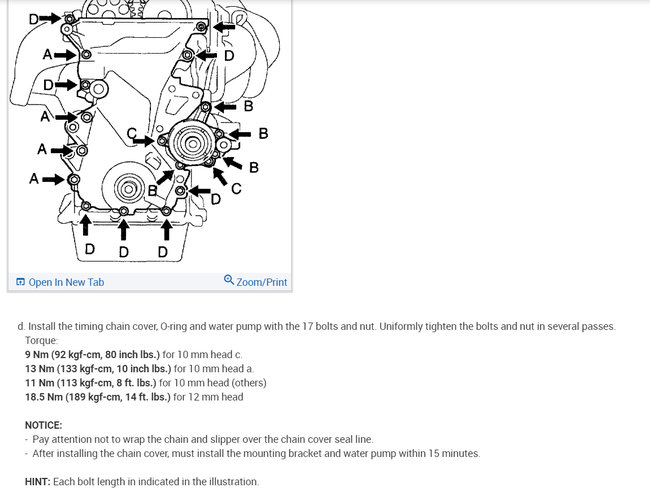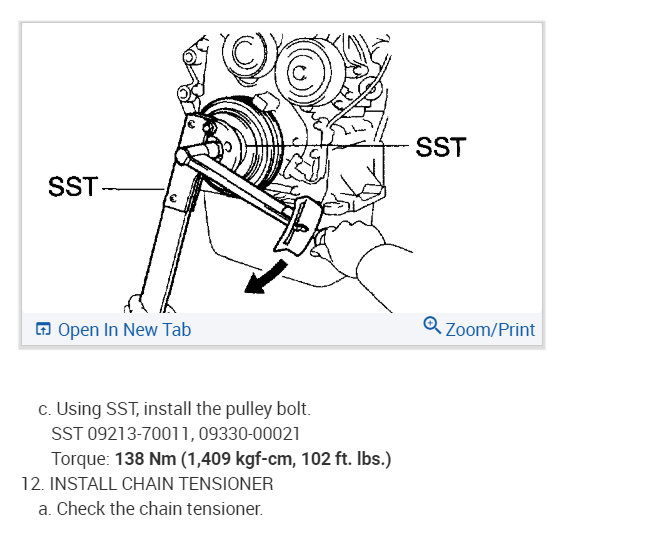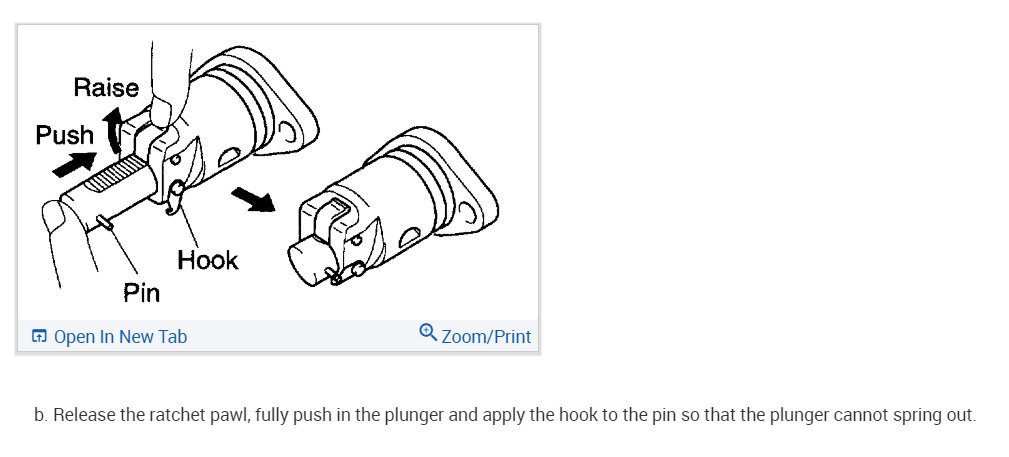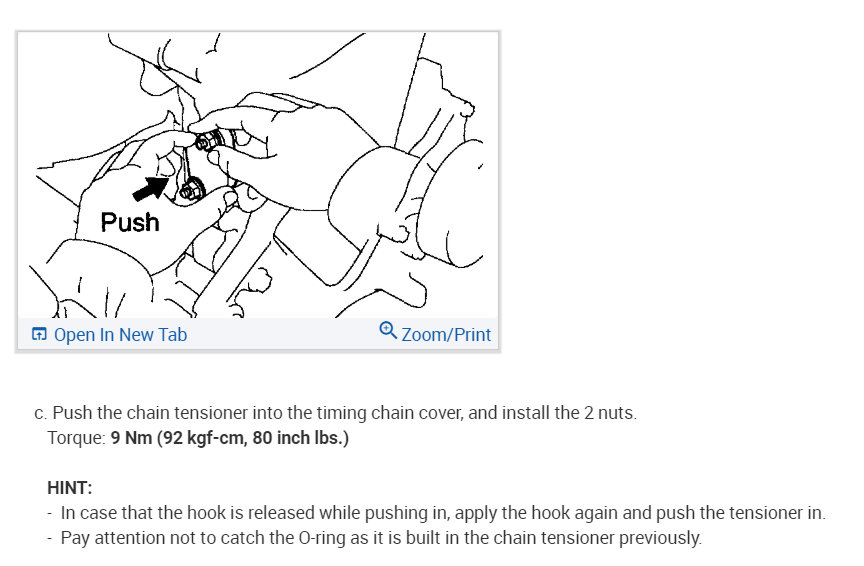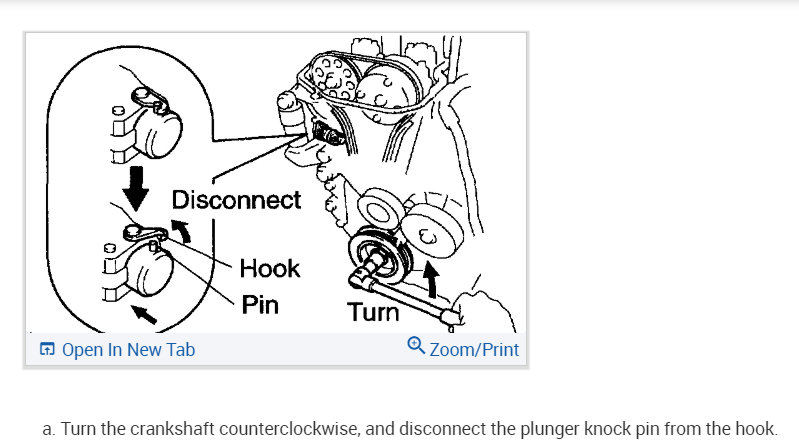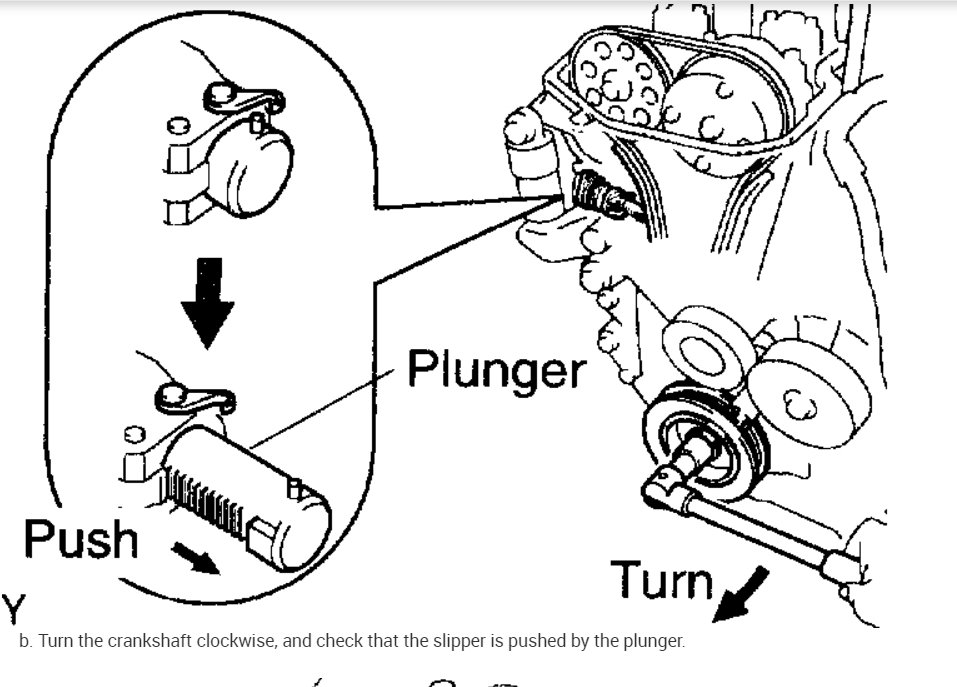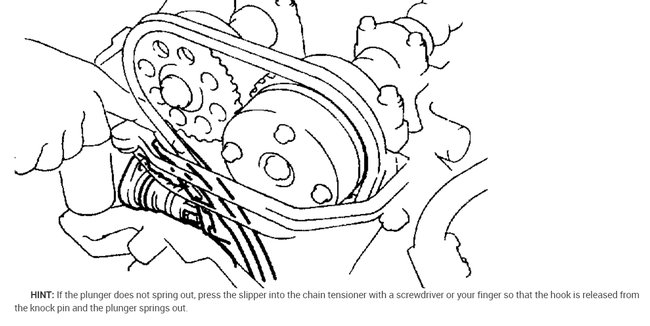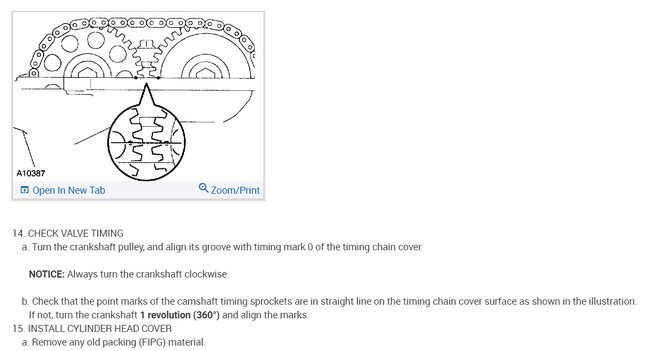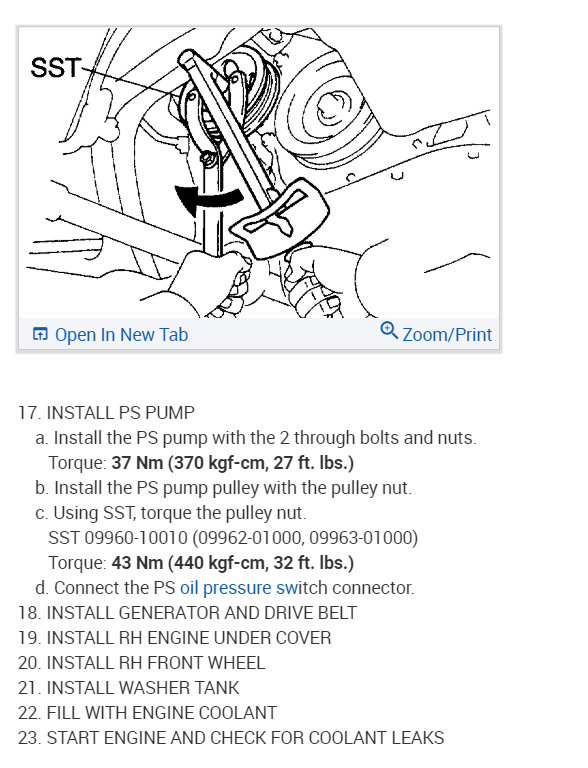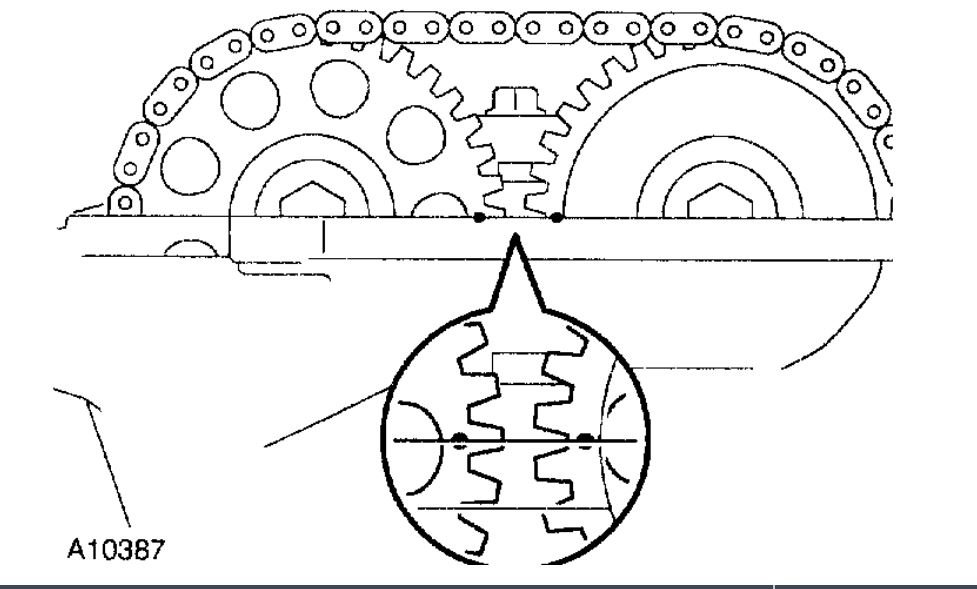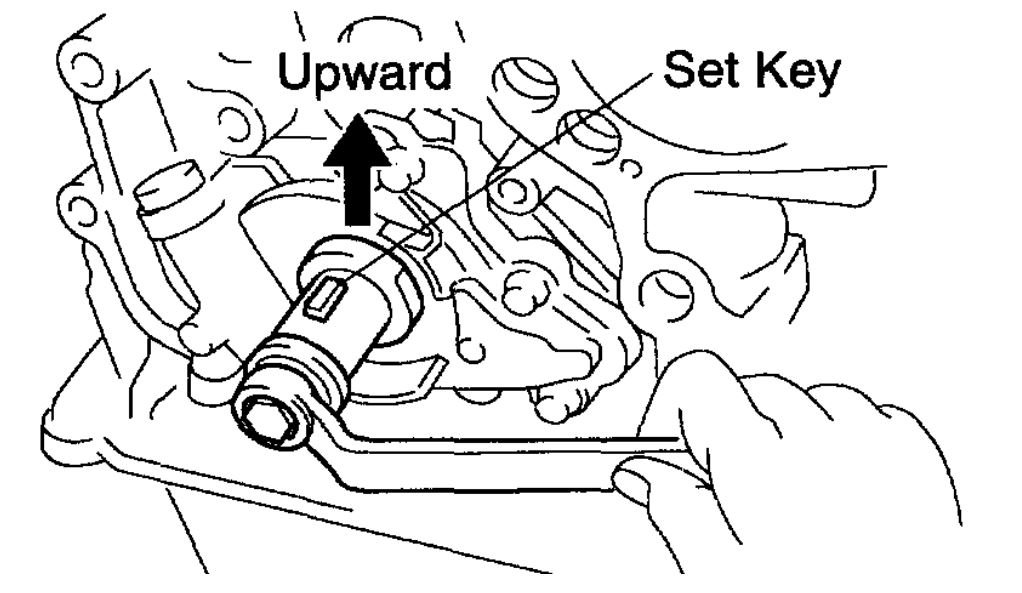Hello wilsaaw
1ZZ-FE Engines
Remove or disconnect the following:
Negative battery cable
Right engine cover
Accessory drive belt and generator
Power steering pump, without disconnecting the hoses
Right engine mount
Cylinder head cover
Turn the crankshaft so the No. 1 piston is at TDC on the compression stroke
Crankshaft pulley
Crankshaft position sensor from the timing chain cover
Accessory drive belt tensioner
Right engine mounting bracket
Chain tensioner
Water pump
Timing chain cover
Crankshaft angle sensor plate
Timing chain tensioner slipper
Timing chain and crankshaft timing sprocket
To install:
Crankshaft sprocket with timing chain. Be sure to align the No. 1 mark link with the mark on the sprocket
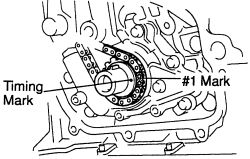
Timing chain on the camshaft sprockets. Align the Nos. 53 and 67 mark links with the marks on the camshaft sprockets
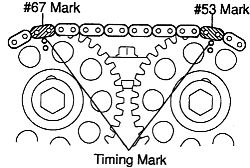
Chain tensioner slipper. Bolt: 14 ft. lbs. (18.5 Nm).
Crankshaft angle sensor plate
New seal in the front cover
Silicone sealant to the timing chain cover as illustrated
Timing chain cover
Water pump. Tighten the bolts marked -C- to 80 inch lbs. (9 Nm) and tighten the remaining bolts to 14 ft. lbs. (18.5 Nm). Be sure to install the bolts in their original locations. Bolt lengths:
1. A: 1.77 in. (45mm)
2. B: 1.38 in. (35mm)
3. C: 1.18 in. (30mm)
4. D: 0.98 in. (25mm)
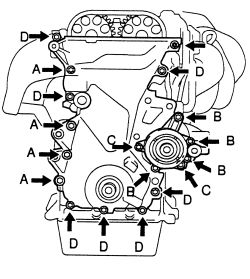
Install or connect the following:
Right engine mounting bracket. Bolts, with sealant applied: 35 ft. lbs. (47 Nm).
Drive belt tensioner. Bolt: 51 ft. lbs. (69 Nm). Nut: 21 ft. lbs. (29 Nm).
Crankshaft position sensor. Tighten to 80 inch lbs. (9 Nm).
Crankshaft pulley. Bolt: 102 ft. lbs. (138 Nm).
Release the ratchet pawl and compress the chain tensioner. Place the hook on the pin to keep the tensioner compressed.
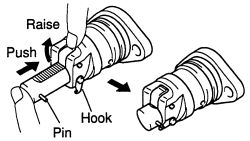
# Install the tensioner, using a new O-ring. Torque the bolts to 80 inch lbs. (9 Nm).
# Turn the crankshaft counterclockwise and remove the hook from the pin. Turn the crankshaft clockwise and be sure the slipper is pushed by the plunger.
# Check the valve timing by turning the crankshaft clockwise until the mark of the pulley is aligned with the mark on the timing chain cover. The marks on the camshaft sprockets should be facing each other as shown.
# Install or connect the following:
Silicone sealant to the 2 areas where the timing chain cover meets the cylinder head.
Cylinder head cover. Bolts with washers in the sequence shown: 80 inch lbs. (9 Nm). Bolts without washers: 96 inch lbs. (11 Nm).
Right engine mount. Bolts: Marked A : 47 ft. lbs. (64 Nm). Marked B : 19 ft. lbs. (26 Nm). Nut: 38 ft. lbs. (52 Nm).
Power steering pump
Alternator and drive belt
Right engine undercover
Negative battery cable
Washer tank
# Fill the cooling system to the proper level.
# Start the vehicle, check for leaks and repair if necessary.
hope this help.
Tuesday, December 15th, 2020 AT 8:32 AM
(Merged)
